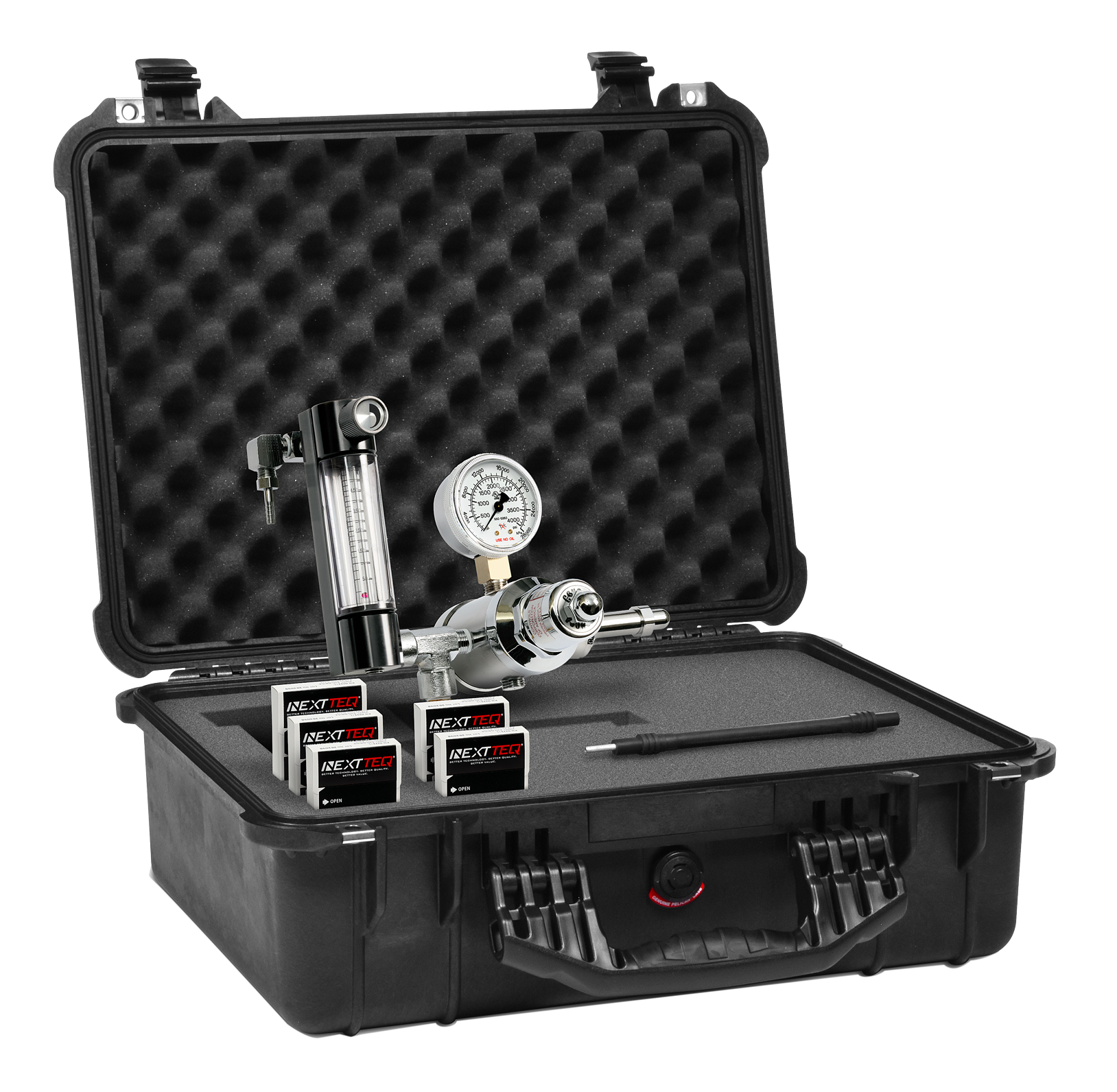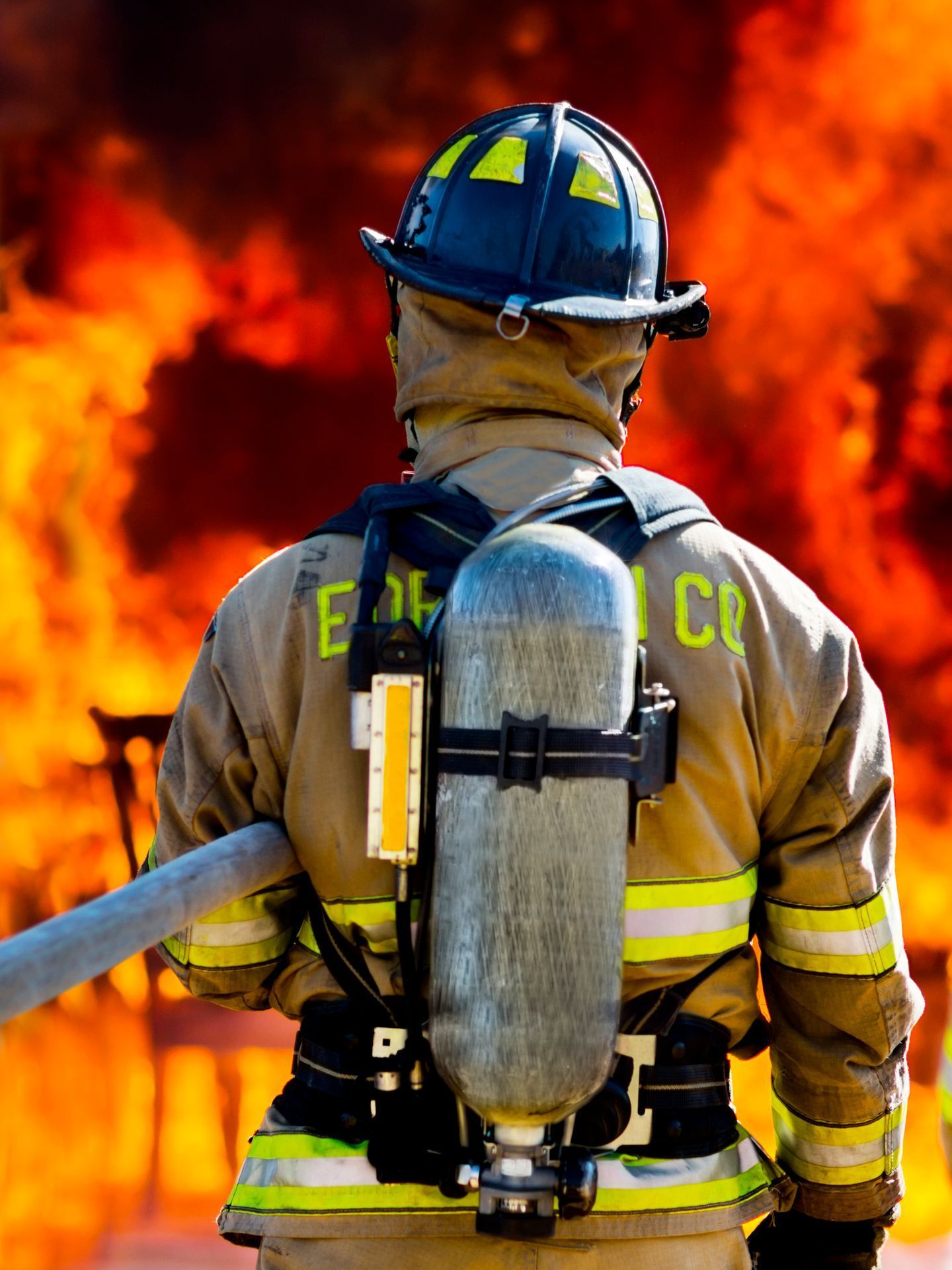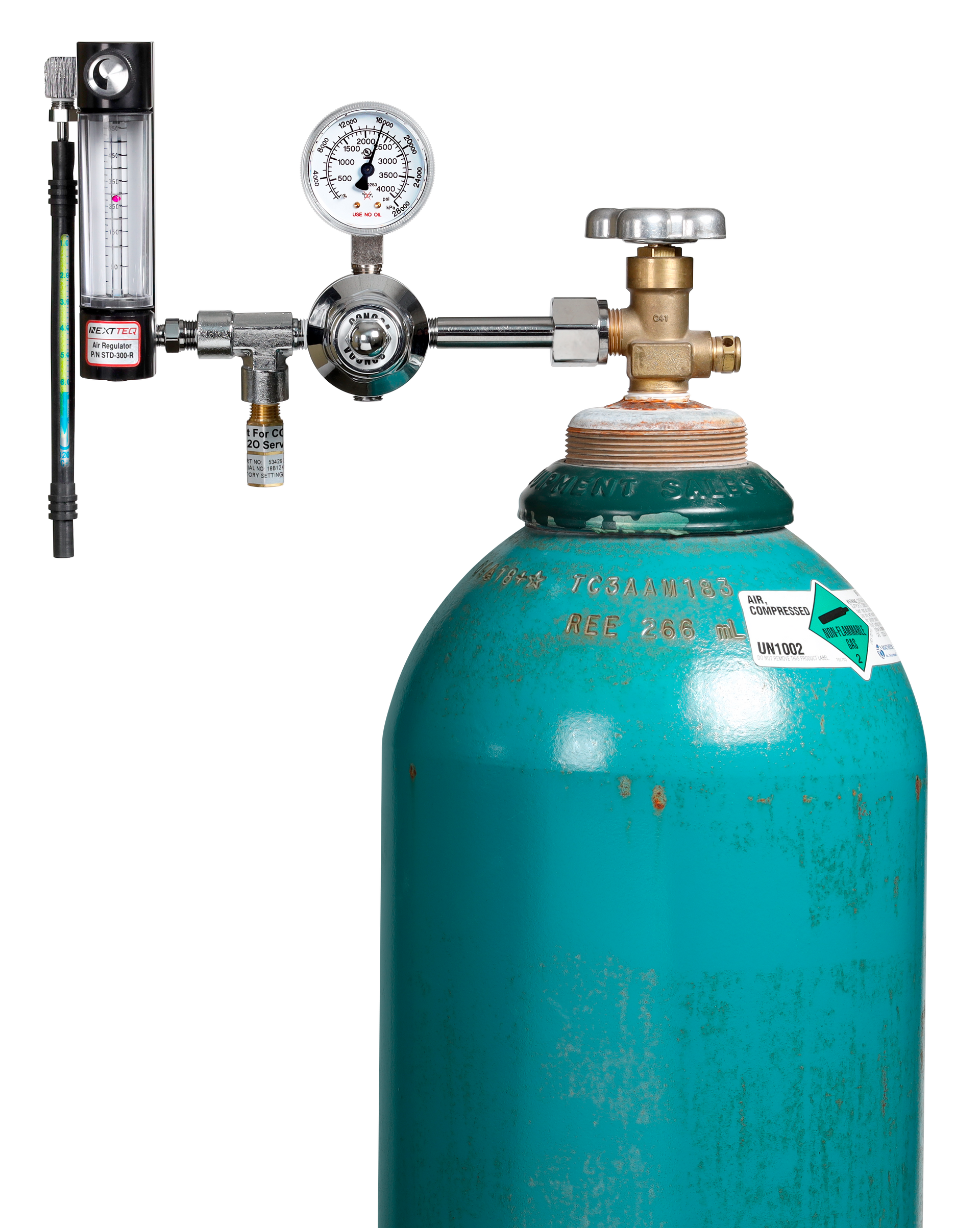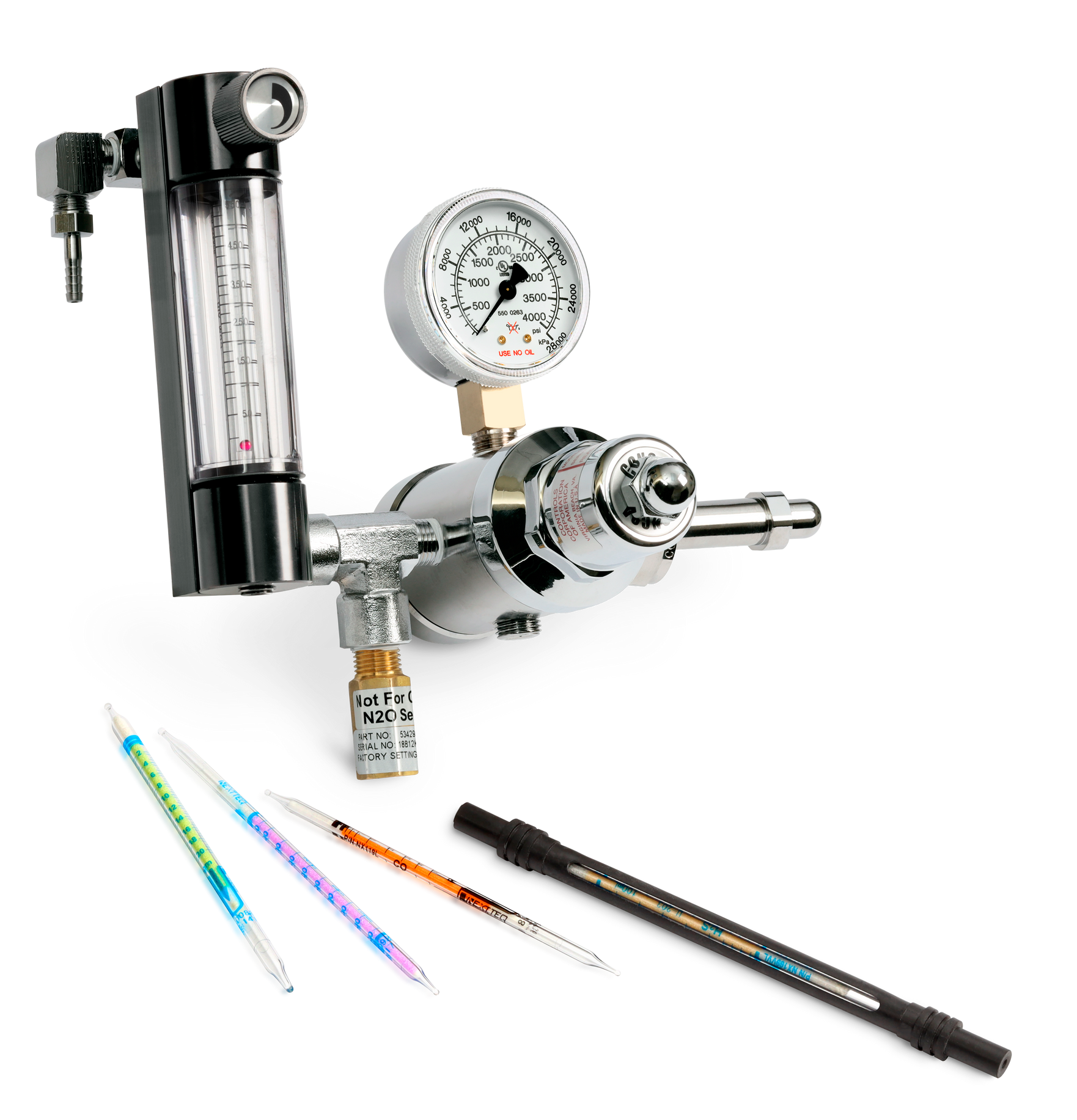Nextteq's Compressed Breathing Air (CBA) Regulator Kits
2 Kit offerings using different tube and regulator systems
Kit 1) Nextteq® Compressed Breathing Air (CBA) Regulator Kit using Nextteq® CBA Detector Tubes
We continually strive to offer the very best solutions for your testing challenges!
01
Test 5 substances listed in Compressed Gas Association's (CGA) Grade D standard for breathing air:
CO, CO₂, NOX, Oil Mist and O₂
02
All Nextteq detector tubes are length of stain and makes reading quick and easy!
03
The Nextteq flow meter and regulator come with a calibration chart for better accuracy.
04
No power required - every component is intrinsically safe.
Nextteq's new and improved Compressed Breathing Air (CBA) kit
Our new CBA kit now includes the ability to test for oxygen! In addition, a new Nextteq® regulator and flow meter system is included to work with the Nextteq® CBA tubes.
Quality is key and our new regulator and flow meter system is no exception. The flow meter comes with a calibration chart prepared by comparing the flow meter to a calibrator. Use of the chart will improve the accuracy of the set flows, especially at the lower end of the flow meter scale. Flow meters tend to be more accurate at a higher flow rates than they are at lower flow rates. The calibration chart will allow for more accurate readings for all of the tubes included in the CBA kit.
Testing is made simple! Once you attach the regulator to an air bottle or you adapt it to an air supply manifold, follow the 3 steps below for all tubes except O₂:
- Break the tube tips and insert the tube with the arrow pointing down
- Set the flow rate for the first tube
- At the end of the allotted time, remove the tube from the regulator, and read the tube immediately!
For O₂, you will be using a syringe kit with included instructions. The syringe is used to monitor the volume of 50cc sample air.

Did you know?
Some common breathing air contaminants are carbon monoxide, carbon dioxide, nitrogen oxides, oil mist, and water vapor, as well as oxygen deficiency.
Oxygen
Oxygen, in general, is not toxic at standard pressures and is necessary for sustaining life. In fact, it is a vital component for respiration and the proper functioning of our cells. We breathe in oxygen to support various biological processes in our bodies. However, exposure to excessively high or low levels of oxygen can have adverse effects on the body. Low oxygen levels can result in Impaired cognitive function and coordination, respiratory and cardiovascular issues, organ damage (e.g., heart, lungs, liver and kidneys), and hypoxemia (i.e., low oxygen levels in the bloodstream). Conversely, prolonged exposure to elevated levels of oxygen can lead to oxidative stress, lung damage, and other adverse effects. Proper monitoring of oxygen levels is essential for the safety of workers.
Carbon Monoxide
Of the common potential contaminants, CO is the most deadly. It is colorless and odorless with no warning properties. CO combines with blood hemoglobin more readily than oxygen causing oxygen starvation in body tissues. Exposure causes headaches, heart palpitations, and loss of equilibrium, confusion, unconsciousness, and death.
Carbon Dioxide
CO2 is also toxic but can be tolerated in much higher concentrations than CO. Effects are somewhat similar to CO, but the increased breathing rate accompanying CO₂ poisoning increases the intake of all coexisting contaminants. Exposure causes headaches, dizziness, sweating, shortness of breath, increased heartbeat and blood pressure, coma, asphyxiation, and convulsions.
Oil Mist
Oil mist and particulate matter are forms of condensed hydrocarbons. The larger particles are readily removed by the upper respiratory tract, but smaller particles can be retained and cause problems. Oil mist in the lungs can cause lipoid pneumonia, and emphysema.
Water Vapor
Water Vapor in a breathing air system causes different problems. It can promote system corrosion and cause regulator failures due to icing in cold weather. It can destroy the catalyst in a filtration system that removes CO by converting it to CO2.

Ordering Information:
Nextteq® CBA Kit P/N NX90158
Contains: Nextteq® Regulator and Flow Meter Assembly, NX-1000 Manual, Pelican Carrying Case, syringe kit and the 5 boxes of Nextteq® CBA tubes as follows:
| Gas to be measured | Nextteq® Tube No. | Measuring Range(s) (ppm) | Sampling time (min) | Qty of tubes/box |
|---|---|---|---|---|
| Carbon Dioxide (CO₂) | NX801 | 100-3000 | 2 | 10 |
| Carbon Monoxide (CO) | NX802 | 5-100 2.5-5 | 2 4 | 10 |
| Oil Mist | NX803 | 0.3-5mg/³ | 25 | 10 |
| Oxyen (O₂) | NX804 | 2-24% | 1 | 10 |
| Watr Vapor H₂O | NX805 | 20-60mg/m³ | 1 | 10 |

Kit 2) Nextteq® Compressed Breathing Air (CBA) Regulator Kit using Gastec® CBA tubes
Nextteq® CBA Kit - using Gastec® CBA tubes and a Nextteq®-specified regulator and flowmeter.
Contains: Nextteq® Regulator and Flow Meter Assembly, NX-1000 Manual, Pelican Carrying Case, syringe kit and the 4 boxes of Gastec® CBA tubes as follows:
| Gas to be measured | Gastec® Tube No. | Measuring Range(s) (ppm) | Sampling time (min) | Qty of tubes/box |
|---|---|---|---|---|
| Carbon Dioxide (CO₂) | 2A | 250-3000 | 5 | 10 |
| Carbon Monoxide (CO) | 1A | 5-50 | 5 | 10 |
| Oil Mist | 109AD | 0.2 - 5.0 mg/m³ 0.1-0.2 mg/m³ | 10 20 | 10 |
| Watr Vapor H₂O | 6A | 20-80mg/m³ | 5 | 10 |


Contact UsTo reach the Nextteq #1 Customer Service Team call 813-249-5888
or toll free at 877-312-2333
©2023 Nextteq International LLC. All rights reserved. Nextteq, Nextteq logo, NXI, NXI logo, VeriFit, VeriAir Flex, VeriAir, Multi-teq, and ReadyGo are a registered trademarks of Nextteq International LLC. All other brand names and trademarks mentioned in this document are the properties of their respective holders. All features, specifications, and prices are subject to change without notice.
Legal Notice & Privacy Policy | Content Copyright ©2023

